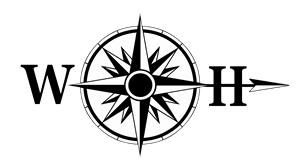Win A Marine Archaeology Course
In The Caribbean
Worth More Than £2,000
(Click here for further information)
Article #9
| Title: | Searching For Wrecks – Part #2 |
| Produced By: | Mike Haigh (Project Director Wreck Hunters) |
You have done your research; you know what you are looking for and have some idea where it might be. But now you are ‘on site’ looking at a frighteningly large area of sea. It might be calm and placid, but more likely it will be whipped into a froth of wave and spume. Worse, part of the search area may be covered by obstructions such as ice. A voice in your head says, ‘what the heck do we do now?’
The only thing you can. Deploy an AUV (Autonomous Underwater Vehicle) An AUV is a robot that travels underwater without requiring input from an operator. The key point is that it is not connected to the surface by an umbilical and therefore not restricted or hampered by surface conditions. AUVs carry sensors to navigate autonomously and map features of the ocean. In our case this means locating our ‘target’.
Typical sensors include compasses, depth sensors, side scan sonar, magnetometers , conductivity probes and sometimes biological sensors.
Before an AUV is launched a CTD (conductivity, temperature and depth) cast is carried out. This involves sending a probe to the ocean floor to generate a range of evaluations, from which the calibration of the relevant payload systems can be performed. Before launch audits are caried out on the vehicle’s sensory arrays, the propulsion unit is tested, and the rudder and all other mechanical components checked. In addition, the submersible’s navigational functions are reviewed. Finally, in case the AUV has to abort its mission, emergency recovery trials are undertaken to ensure that the vehicle’s GPS andsatellite systems are communicating as expected. After all this the AUV is ready to dive.
For the launch the ship turns into wind and holds a speed of between 2 and 3 knots. AUVs are normally launched rear first down a chute into the sea. From the surface the dive angle is normally 20 degrees, but in adverse conditions this can be raised to 45.
The AUV normally moves to a loiter station and when all systems have been checked the search program begins. The robot progresses to one corner of the search area; final checks take place and the AUV moves to autonomous running and commences the search, cruising at something below 4 knots. The AUV’s navigation system is programmed to follow a series of parallel lines – a bit like mowing the lawn.
Periodically the AUV reaches a prescribed rendezvous station, where a ‘handshake’ takes place . The team on the support vessel check its sensors and navigational systems, corrects any deviations or other irregularities, and then releases the vehicle to carry on searching. Of the systems an AUV possesses, the most relevant for wreck location is the side scan sonar. This emits a downward, fan shaped spread of sonar pulses which are reflected back to the sensors by the landscape within its swathe. Due to the way that the side scan is orientated there can be a blind spot directly below the vehicle . This ‘gap’ can be filled from readings by a multi-beam sonar located in the AUV.
The altitude that the AUV ‘flies’ above the seabed is critical. If you go high, to cover a wide area quickly, the resolution of the images produced can be poor. If you go low, the field of vision is narrower, and you can see what there is in greater detail. But the search time will be extended – at extra cost. Remember, these vessels cost a fortune to operate every day. Nobody has an unlimited budget.
Unlike ROVs, which give us a real time view of what is there, AUVs take time to reveal their secrets. You have to wait until its voyage is over before its data can be transferred to a server for conversion into a legible format. This often takes up to 5 hours. Then you need a specialist to decipher what the side scan has revealed.
So, a bit more complicated than a circular search but normally the rewards for all this effort and cost are high, and of course there are no guarantees!
Next time we will be looking forward to the future.
Mike
